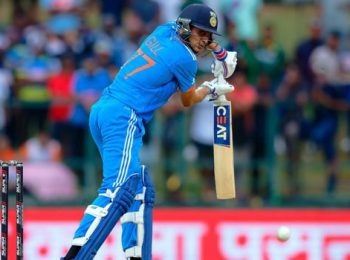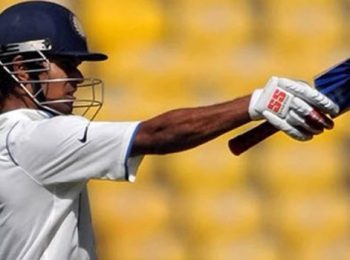India’s strength in cricket continues to impress, with a dominant 4-1 victory in the T20 series. As the focus shifts to the upcoming ODI series, all eyes are on the return of experienced players like Virat Kohli and Rohit Sharma. Their performance will be crucial, especially with the Champions Trophy just around the corner in February and early March.
Another exciting development is the inclusion of Varun Chakravarthy in India’s ODI squad, marking his first appearance in the format. This highlights the impact of T20 cricket in shaping new talent, as seen with Abhishek Sharma’s explosive century at Wankhede. His performance exemplifies the confidence and skill players gain through
the Indian Premier League (IPL), which continues to serve as a strong talent pipeline for international cricket. As India prepares for upcoming challenges, the blend of experience and emerging talent will be key to their success.
India’s cricketing depth and strategic options make them a formidable force. The discussion around left-arm pacers, mystery spinners, and Kuldeep Yadav’s fitness highlights the wealth of talent at their disposal. Players on the fringes are eager to make a comeback, including Ravindra Jadeja, who hasn’t featured in the 50-over format since the World Cup.
For the coaching staff, opposition analysis is crucial—assessing the balance between right-handers and left-handers in the rival lineup helps shape team selection and strategy. However, India’s strength lies in their versatility and squad depth, particularly when playing at home, where conditions favor their diverse bowling attack and batting firepower.
The playing conditions at venues like Nagpur, Cuttack, and Ahmedabad often favor spinners, with pace-off deliveries proving highly effective across formats—whether T10, T20, or 50-over cricket.
India’s bowling attack also faces key questions regarding fitness and availability. Mohammed Shami is making a comeback after major ankle surgery, while Jasprit Bumrah’s recent injury setback, notably in the last Test against Australia in Sydney, raises concerns. Managing these fitness challenges will be crucial as India fine-tunes its squad for upcoming matches.
India has an exciting pool of talent to draw from, and while pace-off deliveries can be effective, genuine fast bowlers could also play a bigger role in the 50-over format. With the longer format allowing for extended spells and possibly a couple of slips in place, skilled swing bowlers may have greater impact.
England, too, have intriguing options, particularly Jofra Archer. His ability to sustain performance over longer formats remains a key question—while T20 cricket limits him to just four overs, managing a full 10-over spell in ODIs will be a fascinating challenge to watch.
Brydon Carse is an exciting prospect—tall, strong, and capable of swinging the ball. It will be interesting to see whether Mark Wood features regularly in the 50-over format.
Meanwhile, England’s batting lineup presents some key decisions, particularly regarding wicketkeeping. Will captain Jos Buttler continue to keep wickets in ODIs, or will England turn to alternatives like Phil Salt or Jamie Smith? These choices could play a crucial role in shaping the team’s balance and strategy.
England has several options for the wicketkeeper role, adding flexibility to their lineup.
Ben Duckett brings an aggressive, dynamic approach to the game, making him a valuable asset. Meanwhile, the experienced Joe Root remains a class act, particularly in the 50-over format, where his consistency and technique continue to be key strengths.
Harry Brook is a standout talent, bringing star quality to England’s lineup. Likewise, Liam Livingstone offers a dynamic skill set that adds depth to the team.
What’s particularly fascinating is how these players adapt when transitioning from the fast-paced T20 format to the more demanding 50-over game. The ability to adjust their approach, control the tempo, and pace an innings effectively will be crucial to their success in ODIs.
Bowling strategies also require subtle adjustments when transitioning between formats, and even small changes can make a significant impact.
England, meanwhile, will be eager to bounce back after their 4-1 series defeat. While they may have felt competitive at times, the pressure of high-stakes situations, particularly in batting, proved decisive. Adding to the challenge is the sheer intensity of playing in India—where passionate crowds act as a formidable “12th man.”
This is what makes cricket in the subcontinent so special. Whether in India, Pakistan, Bangladesh, or Sri Lanka, the home crowd’s energy can be overwhelming for visiting teams. As England prepares to take on the might of India in their own conditions, it will be fascinating to see how they rise to the challenge. I, for one, am looking forward to it immensely.






























